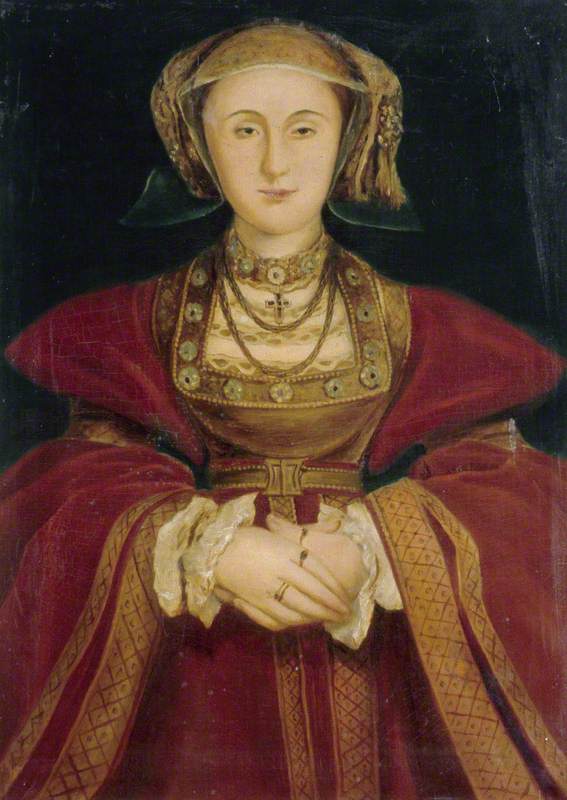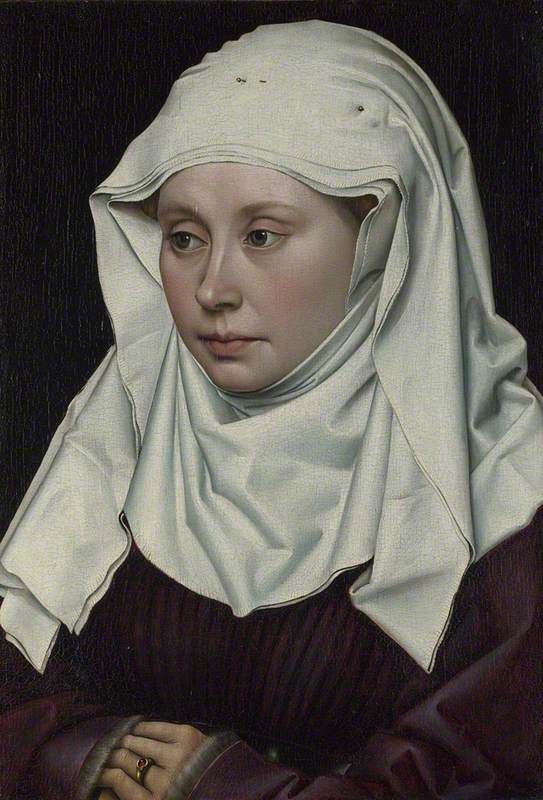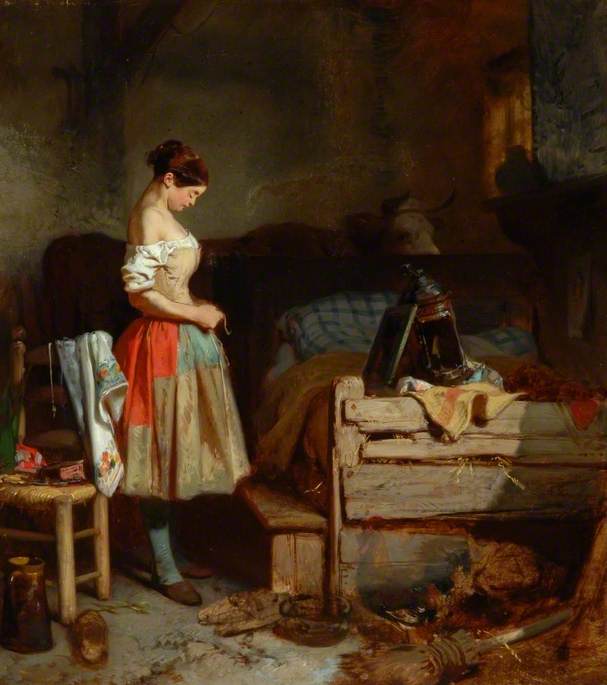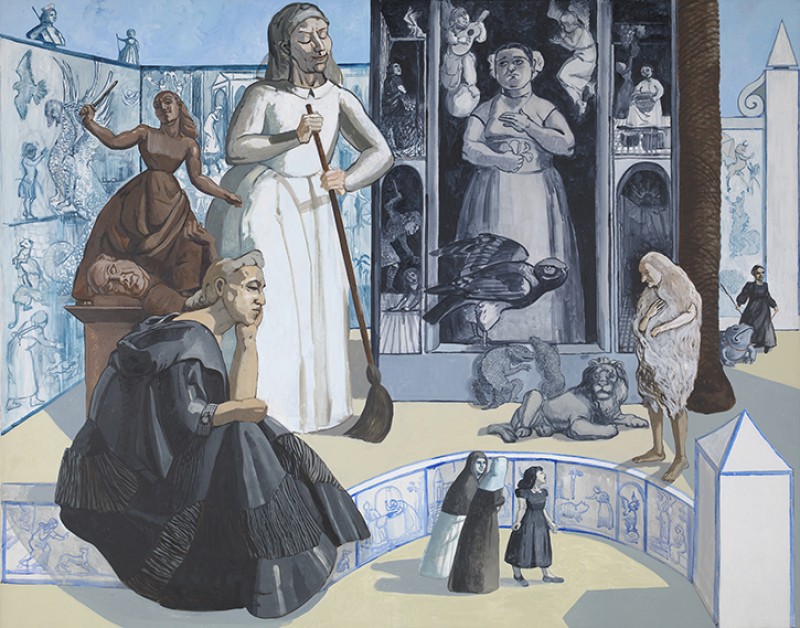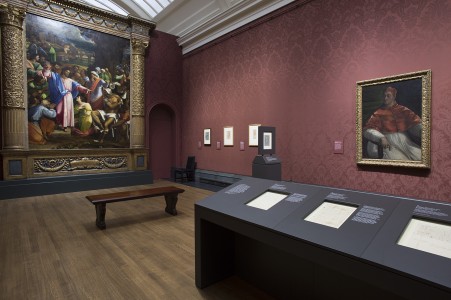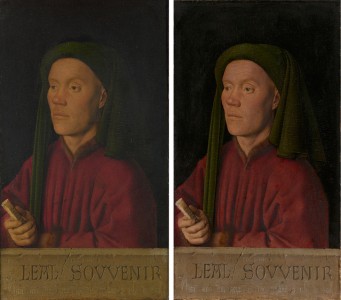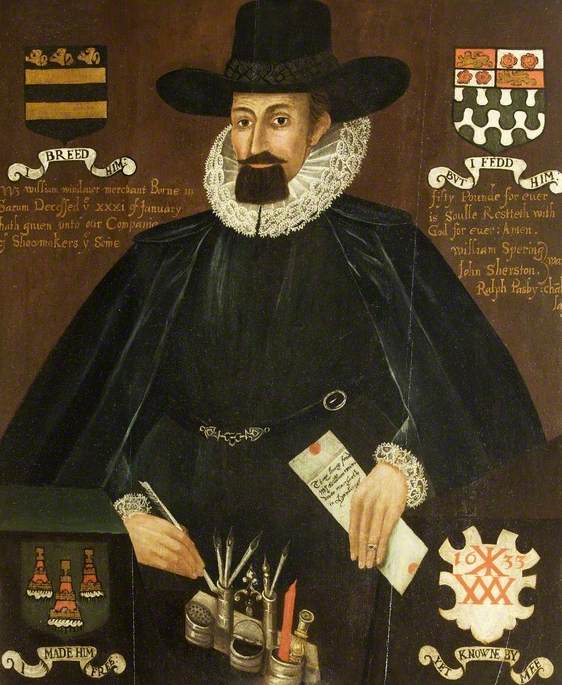This is one of the most arresting faces in The National Gallery's collection. A protruding forehead, eyes set deep in their sockets, a pushed-up nose, wide nostrils, a hairy mole, a toothless mouth, a rumpled neck: the unmistakable features of the old woman known as 'The Ugly Duchess' defy every conventional canon of beauty.
An Old Woman ('The Ugly Duchess')
about 1513
Quinten Massys (1466–1530) 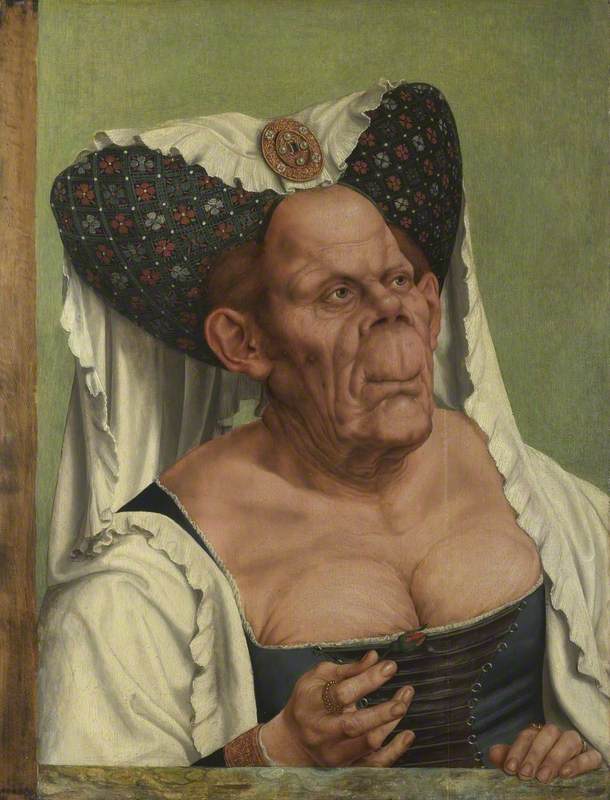
Her attire, especially her bejewelled horned headdress, is lavish. Unconcerned with the decorum expected from elderly women in Renaissance Europe, she has chosen a tightly laced blue dress that emphasises her wrinkled cleavage. But, however fine her clothing, by the time this panel was painted her outfit would have seemed laughably outdated – the clothes were fashionable in her youth, but by 1510 her attire would have made the sitter a figure of ridicule rather than of high fashion.
The old woman is wearing this elaborate garment in the hope of attracting a suitor. This was once explicit. The painting has a pendant: a panel depicting an old man, now in a private collection. Turning towards her companion, the old woman offers him a rosebud – a token of love, which he firmly refuses. Sixteenth-century viewers were invited to laugh at her self-delusion, but she seems blissfully unperturbed by this rebuttal. Today her defiance might inspire empathy or even admiration.
Together, the pair offered a parody of the established genre of the double portrait, poking fun at those who behave in ways considered unbefitting of their age.
Quentin Massys, the Netherlandish artist who painted this work, was one of the Renaissance artists who pioneered the development of secular and satirical art. Massys shared his interest in the bizarre with his contemporary Leonardo da Vinci, who also made many studies of grotesque heads. The two artists' common interest in the expressive power of the human face might have led them to exchange drawings.
The sitter gained the 'Ugly Duchess' nickname in the seventeenth century when she was mistakenly identified with Margaret Maultasch, Duchess of Carinthia and Countess of Tyrol, smeared by her enemies as the 'ugliest woman in history'.
Illustration from 'Alice's Adventures in Wonderland'
1865, drawing by John Tenniel (1820–1914) 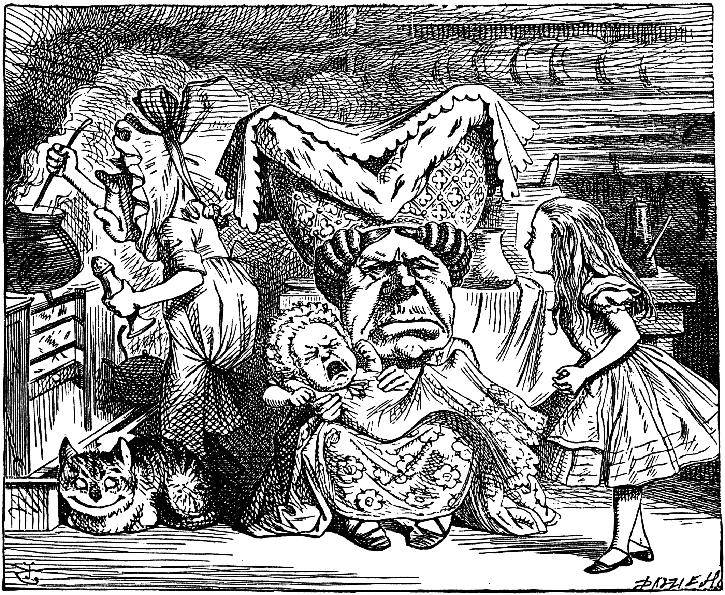
Two hundred years later, John Tenniel used this picture or one of its many versions as a basis for his depiction of the Duchess in his illustrations for Alice's Adventures in Wonderland, thereby enshrining the image in the British imagination.
Emma Capron, Associate Curator of Renaissance Painting at The National Gallery

